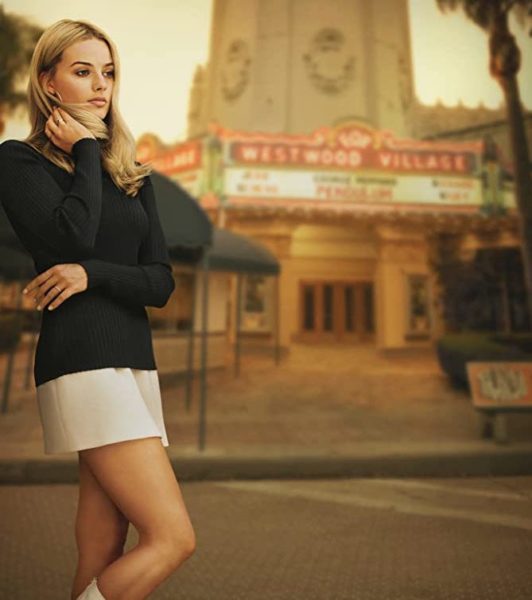If the staff of Boxoffice Pro can’t go to the movies right now, well, at least we can watch other people go to the movies. From Buster Keaton’s Sherlock Jr. to La La Land, film has always had a fancy for turning its eye inward—most clearly seen in moments where characters, themselves, go out to a theater to catch a film. Here are some of Boxoffice Pro‘s favorite scenes.
Whiplash
In Damien Chazelle’s modern classic Whiplash, our protagonist Andrew (Miles Teller) and his father Jim (Paul Reiser) go to the cinema together. Jim pours an entire box of Raisinettes into the popcorn he’s sharing with his son, who replies dismissively, “I don’t want the Raisinettes.” Jim: “Why didn’t you say that?” Andrew: “I just eat around them.” The dialogue’s intentional banality contrasts brilliantly with the filmmaking mastery on display throughout the entire rest of the film, helping to subtly ground even the most cinematic moments against a backdrop of realism.—Jesse Rifkin, Box Office Analyst
Variety
A bit of a cheat here, since this top-tier “movies at the movies” scene isn’t a scene so much as is a large chunk of the film—specifically Bette Gordon’s Variety, about a young woman who takes a job selling tickets at at a Times Square porn theater. Trapped in a tiny box office booth observing a parade of seedy characters, Christine (Sandy McLeod) develops an obsession with one of the theater’s patrons (Will Patton), leading to a sexual awakening that—rare in the world of erotic thrillers—positions the woman as the subject, not the object, of desire. Variety was a blind watch for me—a screening popped up at the Museum of Modern Art shortly before the shutdown, and the two-sentence synopsis seemed interesting, so I checked it out. It’s not something I had heard of before or likely would have seen otherwise—and thus it stands, for me, as a prime example of the ability of repertory programmers to expand viewers’ horizons and increase our knowledge of film history.—Rebecca Pahle, Deputy Editor
Once Upon a Time in Hollywood
Though I didn’t love the final act of Quentin Tarantino’s Once Upon a Time in Hollywood (not a fan of sadism!), the scene of Margot Robbie as Sharon Tate watching the real Sharon Tate in The Wrecking Crew (at the Regency Bruin Theater in Westwood) is a sweet, melancholy, and lovingly-crafted ode to the Manson Family’s most famous victim. The prolonged scene demonstrates the kind of humanity Tarantino is capable of when he’s not too busy broiling characters with flamethrowers or bashing their heads into fireplace mantels.—Chris Eggertsen, Analyst
Inglorious Basterds
When I was eight years old, this answer would have easily been Last Action Hero. I had a great affinity for Arnold Schwarzenegger and his movies, partly because we share the same birthday and, as a kid, that was the coolest characteristic I could have in common with a celebrity that I liked—a random fact that coincidentally expanded to include another favorite filmmaker, Christopher Nolan, as I grew older. Specifically, though, Last Action Hero‘s driving conceit was that movies could literally come to life, and that was something I overwhelmingly identified with. Since then, however, the crown has changed hands to Quentin Tarantino’s Inglourious Basterds, the first of what’s become his quasi-trilogy of alternate history films. There’s a satisfying irony that his characters used a venue highly influential in Tarantino’s own life, and in the life of all movie lovers, to achieve entertainment and escapism through fictional revisionism of one of the world’s darkest periods.—Shawn Robbins, Chief Analyst
Taxi Driver
It’s easy to remember the good dates we’ve had at the movies, but it’s the truly awful ones that are hard to forget. That’s why I love the first date scene in Taxi Driver; it’s one of the few moments where we genuinely feel bad for Robert De Niro’s Travis Bickle and his alienation to the city around him. As the couple walks into that seedy movie theater in Times Square, there’s a fleeting moment where you can imagine the unlikely couple working out. Cybil Shepherd’s Betsy enters the theater, knowing full well it’s “a dirty movie” but taking the risk to trust Travis nevertheless. That illusion comes crashing down in an instant. The entire movie turns on that moment. Walking into that Times Square cinema is as close as Travis gets to escaping the rundown streets of 70’s midtown Manhattan.—Daniel Loría, Editorial Director
Annie Hall
Released a year after Taxi Driver and taking place only twenty blocks north of that Times Square cinema, Woody Allen’s Annie Hall might as well be set in a parallel universe. Scorsese’s midtown grit is replaced by an Upper East Side, where the protagonist’s biggest mental health issue is his own neurosis. It’s also the site of another terrible date at the movies, as Allen’s Alvy Singer and Diane Keaton’s titular character get in multiple arguments outside of cinemas––first over entering a screening once it’s already started, and the second as they wait in line and put up with the loud conversation from the insufferable jerk behind them. Two moments that a rational person would just let slide, but pet peeves I happen to share and that probably make me as much of a bad date at the movies.—Daniel Loría, Editorial Director



Share this post